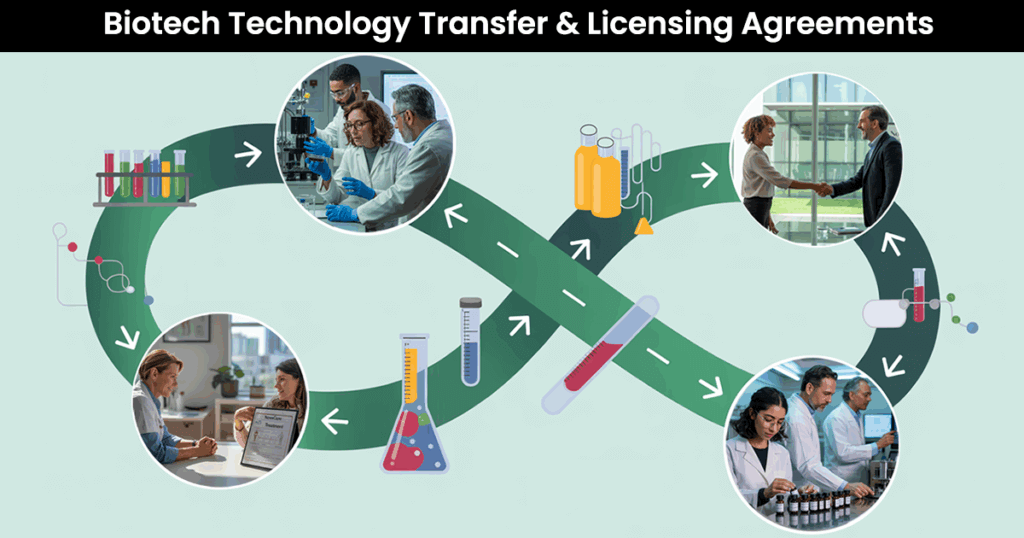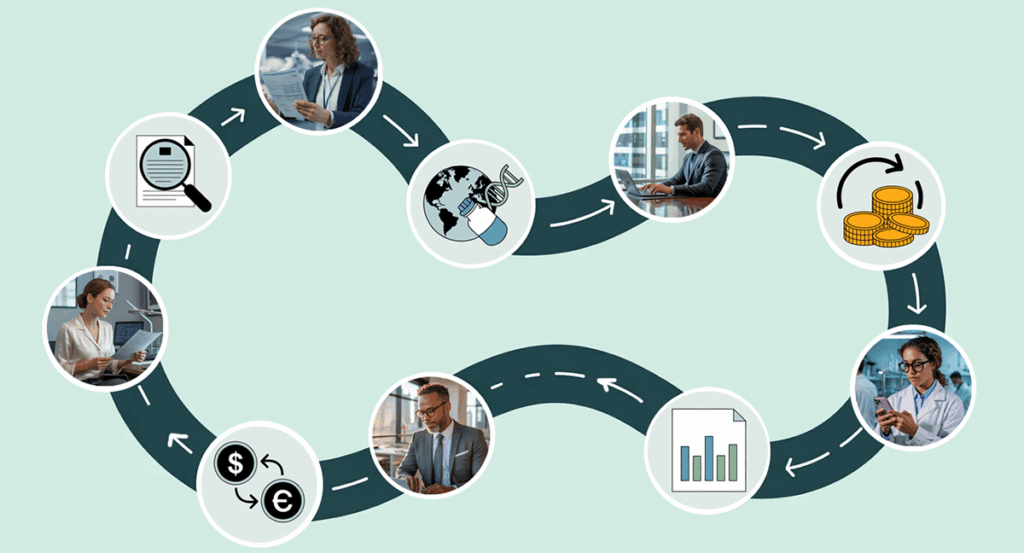No Results Found
The page you requested could not be found. Try refining your search, or use the navigation above to locate the post.
The page you requested could not be found. Try refining your search, or use the navigation above to locate the post.
Recent decades have seen remarkable increases in the speed and scale of biotechnology innovation, with the rapid development and global deployment of COVID-19 vaccines being a prime example. Breakthroughs of this scale aren’t achieved by lone, isolated researchers — they require massive levels of collaboration among scientists, institutions, and funders.

Technology transfer is a mechanism that allows specialized teams of experts across organizations to contribute to a final product without distraction from their core areas of expertise. It also enables diverse funding streams (from commercial, governmental, and/or non-profit entities) to be leveraged to make the significant financial investments that advanced biotech research requires.
This guide explains what biotech technology transfer is, how it activates the application, commercialization, and manufacturing of laboratory discoveries and inventions, various models and types of tech transfer, and the benefits and challenges of this approach. It also explores the financial aspects of the tech transfer process, including royalty calculations, payments, and tracking, and financial compliance issues.
In biotechnology, technology transfer is the process of adapting scientific findings, methods, or inventions from the research phase, often within a university, research institution, or corporate R&D division, into a commercial product or process. This transfer can involve:
Biotech technology transfer generates licensing revenue for the inventor or owner of an element of biotech IP (the licensor), and delivers value to the entity that acquires the right to use that IP (the licensee). It requires intensive collaboration among multiple groups of professionals. Scientists communicate the technical aspects of the IP among their teams. Legal departments negotiate usage rights and contract terms. Meanwhile, finance departments ensure the deal terms are modeled correctly, cash flows are tracked, and revenue and expenses are recognized in line with accounting and tax requirements.
Royalties are payments made by the licensee to the licensor as compensation for the ongoing use of the licensed IP. They are calculated as a percentage of sales revenue generated from products or services that incorporate the transferred technology. They are often agreed upon in addition to a flat upfront or minimum fee, and perhaps also other fees to be delivered when certain project milestones are reached.
Different licensing and partnership structures define how rights, risks, and revenues are shared, dictating payment terms, milestone triggers, and royalty obligations. Agreements may involve:
The types of biotech technology transfer are impossible to fully enumerate due to the many diverse categories of technology and market applications. Here are a few examples.
For both licensors and licensees, effective biotech technology transfer provides strategic and financial advantages:

Despite the potential rewards, finance executives face a number of operational and compliance challenges:
From a finance perspective, managing a licensing agreement requires precision, traceability, and compliance. Key steps include:
Royalty tracking is not just about cutting checks—it’s a full compliance and risk management exercise. Considerations include:
For biotechnology companies, technology transfer and licensing agreements are the financial lifeblood that transforms innovation into commercial success. Finance executives play a central role in ensuring these agreements are structured, tracked, and executed correctly—turning promising science into sustainable revenue streams.
By mastering the nuances of technology transfer models, royalty tracking, and compliance obligations, finance teams not only protect their organizations from costly mistakes but also help maximize the value of every licensing deal.
Whether you’re working for a biotech company paying out royalties on a tech transfer deal, or a university calculating revenue shares for inventors and researchers, MetaComet® can save you from time-consuming, error-prone manual processes, or inflexible, limited-use, enterprise systems. Our Royalty Tracker® is designed specifically to factor in the complex terms inherent to biotech technology transfer details. Get further details or contact us for a no-pressure demo today.

David Marlin is the President and Co-Founder of MetaComet® Systems, a prominent provider of royalty automation tools. Since founding the company in 2000, David has spearheaded the development of a suite of best-in-class systems that effectively facilitate royalty processes for nearly 200 publishers. David has also served as the chair for The Book Industry Study Group’s Rights Committee and Digital Sales Committee.
Before establishing MetaComet Systems, David served as a technology consultant for renowned publishers, collaborating with notable companies such as Random House, Penguin, HarperCollins, Holtzbrinck, Macmillan, Scholastic, Time Warner, and many others. David holds both an MBA and a BA from Columbia University in New York.
"*" indicates required fields